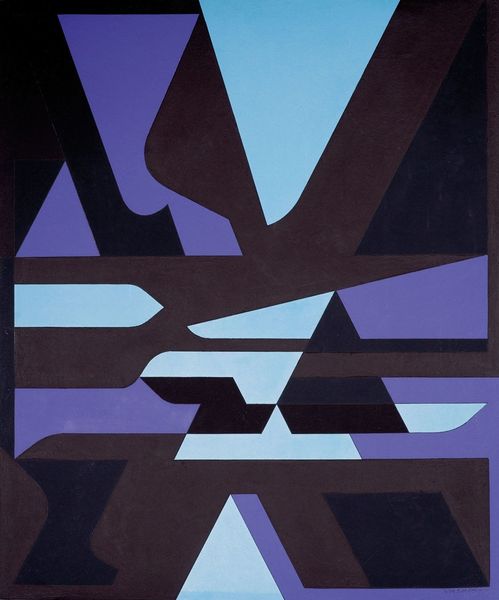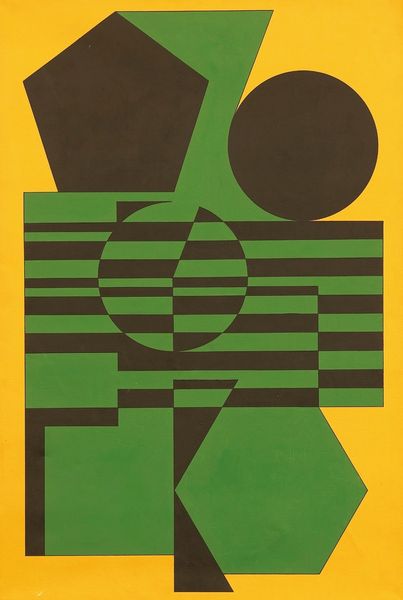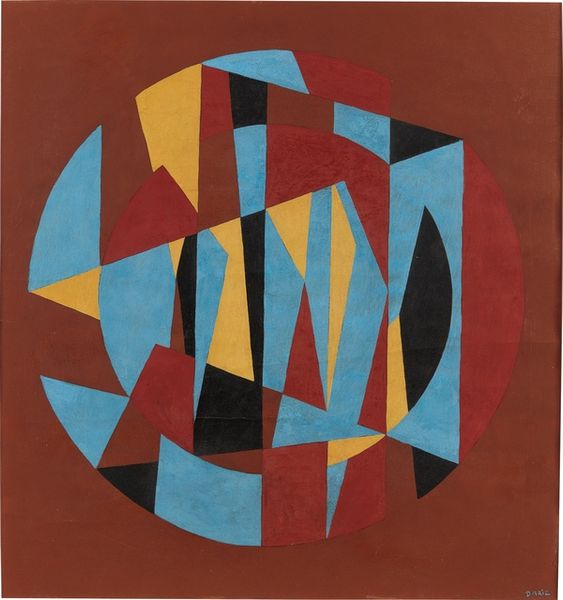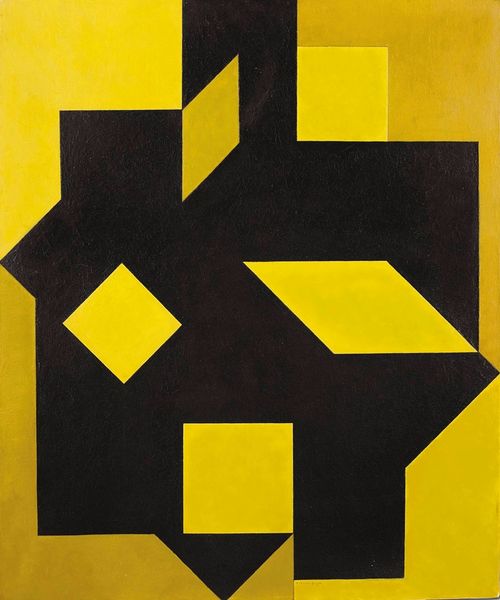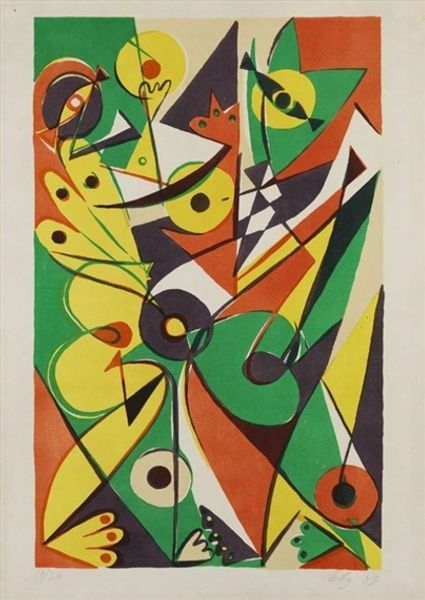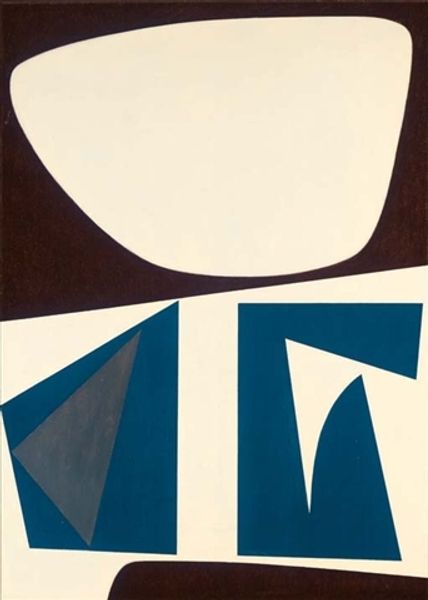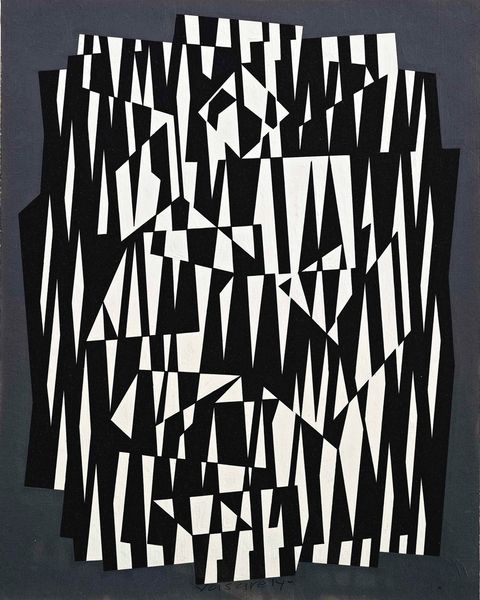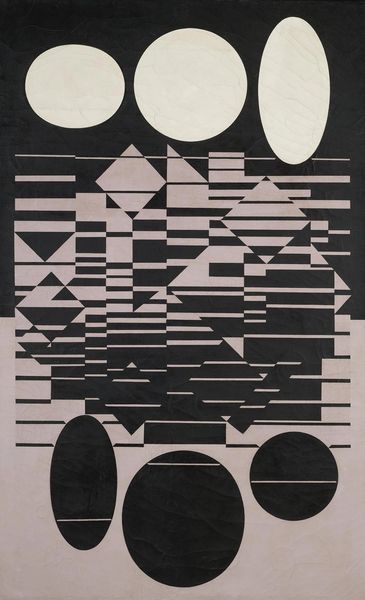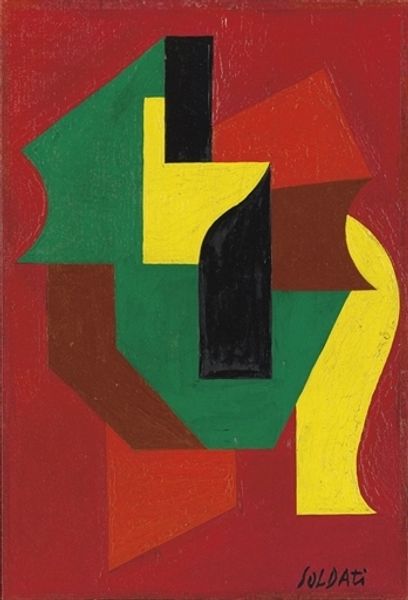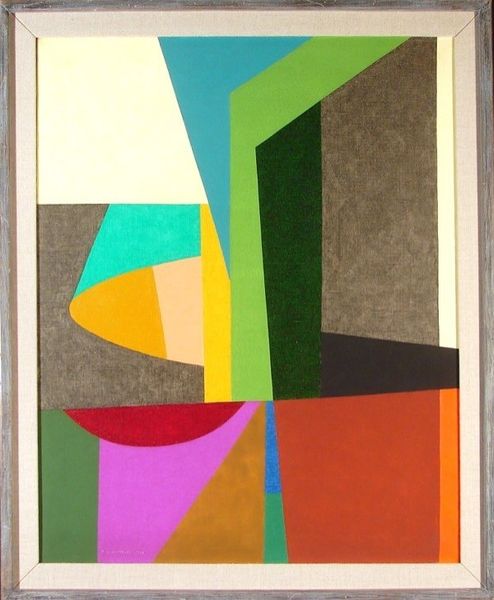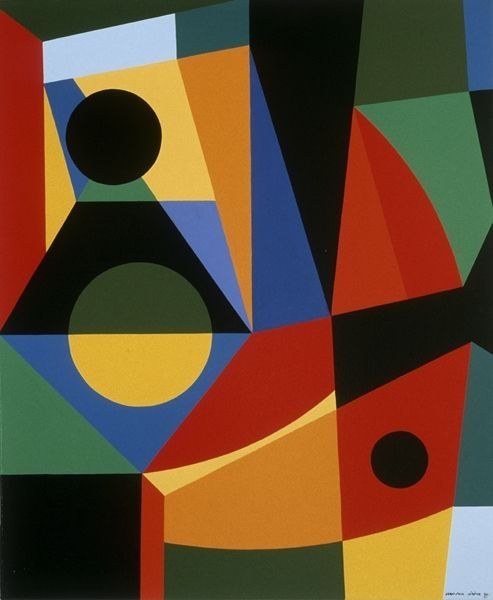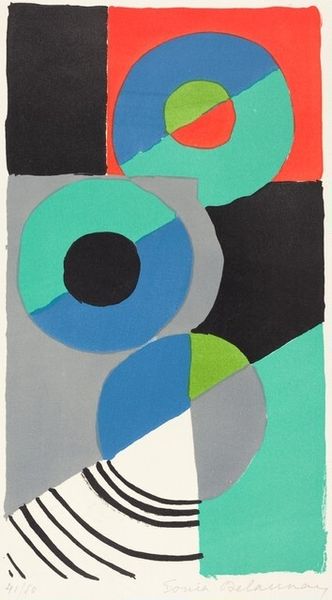
#
pop art-esque
#
popart
#
geometric composition
#
pop art
#
abstract
#
geometric pattern
#
abstract pattern
#
neo expressionist
#
pop art-influence
#
pattern repetition
#
funky pattern
Copyright: Modern Artists: Artvee
Editor: This is Victor Vasarely's "Rochero," created between 1987 and 1988. It’s a striking composition of geometric forms in shades of green and black against a yellow backdrop. It reminds me a bit of Op Art but…chunkier? I’m curious about what underlies this work – what do you see here? Curator: Well, focusing on its materiality, it's crucial to consider the historical context of mass production that deeply influenced Vasarely. This piece, “Rochero,” exemplifies his exploration of geometric abstraction, moving art beyond the confines of unique craftsmanship and exploring modularity as a process in its production. Editor: Modularity, as in, these shapes are meant to be repeated? Curator: Precisely. Consider the socioeconomic factors, too: Vasarely sought to democratize art through these replicable forms, envisioning a society where art wasn't a privileged commodity, but accessible and integrated into the built environment. Editor: So, even though it’s a unique artwork in a museum, it still speaks to ideas about art for the masses? The choice of basic geometric forms makes more sense now. Curator: Exactly! This aligns with post-war ideals of functionality and accessibility which re-evaluated the division between "high" art and industrial design. Does analyzing Vasarely's production process challenge the traditional view of the artist as a singular genius? Editor: Definitely! It shifts the focus from the artist’s hand to the broader systems of design and manufacture. It almost anticipates digital art in a way. I appreciate that new perspective. Curator: Likewise, thinking about how art is not just an object but a process embedded in socio-economic realities deepens our understanding.
Comments
No comments
Be the first to comment and join the conversation on the ultimate creative platform.
